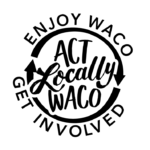By James Karney, Director of the Waco-McLennan County Library
The end of the school year is in sight. Summer is upon us: a time of lemonade, vacation trips, summer camps, and sleeping late. But for far too many children and teens, it’s also a time when they close up their books and do not read.
I’d like to challenge the people of Waco this summer to Read, Waco, Read!
- Read for fun or read for information.
- Read a book, read a magazine, read a newspaper. As long as the topic interests you, you’ll enjoy it.
- Just as exercise keeps your body physically fit, reading keeps your mind mentally fit.
- Parents, grandparents, aunts, uncles, older siblings, caregivers – you have a special charge, read to be an example to the children in your life. If they see you reading, you may find them reading.
A number of academic studies over the past 35 years have found that children who participate in summer reading programs maintain their reading skills, need less reinstruction at the beginning of the school year and perform at a higher level on standardized tests compared to students who do not participate in summer reading programs. In a recent Op-Ed in the New York Times, Frank Bruni lamented the increasing number of children and teenagers who never read for pleasure – currently 22% of 13 year-olds up from 8% of 13 year-olds just twenty years ago.
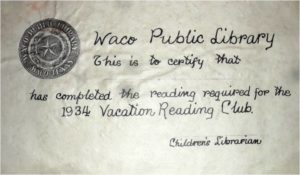 Reading is the key skill that everyone needs to function in society. Reading gives you the ability to communicate, learn, and grow – regardless of your age. For children, it is most important for them to develop the skill and habit of regular reading that they will need for secondary school, post-secondary education and to become lifelong learners and readers.
Reading is the key skill that everyone needs to function in society. Reading gives you the ability to communicate, learn, and grow – regardless of your age. For children, it is most important for them to develop the skill and habit of regular reading that they will need for secondary school, post-secondary education and to become lifelong learners and readers.
For nearly 90 years the Waco library has offered a summer reading program for children and in 2014 the Waco-McLennan County Library will offer summer reading clubs for all ages.
- Fizz Boom READ! for children
- Spark a Reaction for teens and tweens
- Literary Elements for adults.
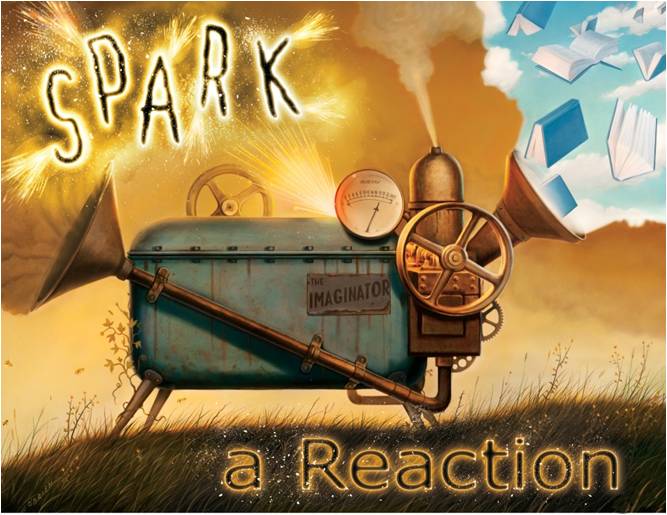 The Children’s and Teen/Tween clubs have a science theme that fits into the emphasis being placed on STEM education in schools. Many of the summer programs and activities planned for these age groups have a science or technology component. To learn more about our summer programs visit the library’s website at, www.wacolibrary.org
The Children’s and Teen/Tween clubs have a science theme that fits into the emphasis being placed on STEM education in schools. Many of the summer programs and activities planned for these age groups have a science or technology component. To learn more about our summer programs visit the library’s website at, www.wacolibrary.org
Sign-up for summer reading clubs begins at all libraries on Monday, June 2, and on Saturday, June 7 the Library will host a Family Fun Day from 1-4pm at the Central Library, 1717 Austin Ave. to kick-off our summer programs. Zooniversity will present a live animal program at 1:30pm and there will be fun for all ages including science experiment stations in the courtyard, teens constructing a 5 foot tall paper rollercoaster, snow cones, crafts and face painting.
 During June and July, support from the Friends of the Library helps provide for weekly Summer Showcase programming programs featuring guest performers at each library:
During June and July, support from the Friends of the Library helps provide for weekly Summer Showcase programming programs featuring guest performers at each library:
- Tuesday, East Waco at 9:30am and 10:30am
- Wednesday, West Waco at 10:30am and 1:30pm
- Thursday, Central at 10:30am and 1:30pm
- Friday, South Waco at 10:30am and 1:30pm
Family Night programming allows children and parents to attend summer showcase programming in the evening:
- Central Library – Tuesdays, June 17, 24 and July 1 at 7pm
- West Waco Library – Thursdays, July 10, 17, 24 and 31 at 7pm
The Angel Paws Reading Buddies program returns for another summer and allows children to practice their reading skills by reading to a furry, four-legged friend. These specially trained animal therapy dogs are great listeners who provide encouragement to reluctant and struggling readers while boosting their self-esteem during a 20 minute reading/craft session. Angel Paws will be at the Central Library on Monday evenings from 6:30-8pm and Wednesday mornings from 10:30am-12:30pm. Contact Vivian Rutherford at 254-750-5952 to schedule a 20 minute session.
For teens and tweens, programs will take place on Tuesday afternoons and Saturday afternoons and will include a variety of hands on science and craft programs. And zombies too!
This past week saw the passing of author and poet Maya Angelou. Of her many, many notable quotes, perhaps my favorite relating to libraries was one during a college commencement address while exhorting the graduates to read voraciously and to never stop learning she stated, “My encouragement to you is to go tomorrow to the library.“
This summer come to the library and – Read, Waco, Read!
 This Act Locally Waco blog post is by James Karney. James has worked in a library since his sophomore year in high school and is the Director of the Waco-McLennan County Library. He enjoys reading biographies, history, and spy/espionage novels. He has been married to the super amazing and talented Anita Karney for 20 years and their son Jamie will complete his sophomore year of high school on Friday – yikes!
This Act Locally Waco blog post is by James Karney. James has worked in a library since his sophomore year in high school and is the Director of the Waco-McLennan County Library. He enjoys reading biographies, history, and spy/espionage novels. He has been married to the super amazing and talented Anita Karney for 20 years and their son Jamie will complete his sophomore year of high school on Friday – yikes!
If you would like to write a post for the Act Locally Waco blog, please contact Ashley Thornton by email at ashleyt@actlocallywaco.org .
by Laura L. White, recent Baylor graduate
I may not drive the “coolest” of cars; it is a hefty station wagon that gets me from point A to B in a safe and timely manner. I have always been appreciative of this luxury, but after a recent experience, my appreciation has grown ten-fold.
On a Friday afternoon, I made an appointment at the McLennan Community College (MCC) Family Health Center to get a simple blood test. I decided to take public transportation to get there. The night before, I researched the bus route on the Waco Transit website. Let me just say, I can understand complex Organic Chemistry problems, but I could not seem to understand the bus system! After about 30 minutes I finally decided on my route.
My Spanish class ended at 2:10 pm and I immediately headed to the bus stop on 12th St. According to my research, a bus was supposed to arrive at 2:24, which would take me to the downtown Waco bus terminal by 3:10. From there, I would hop on a different bus line that would take me to MCC. According to these plans, I would arrive by 3:32pm. My appointment was at 4:30, so I thought I had plenty of buffer time.
I was at the bus stop by 2:20pm… and no bus came. Confused, I used my iPhone to call the main bus transit authority. The person who answered the phone explained that the bus I was expecting was not going to be making that stop. He redirected me to a different bus. I had to walk three blocks over and wait for another twenty minutes until the (free) Baylor Blue Line bus arrived.
We drove around the Baylor campus and various students got on and off. The bus then pulled up outside the gas station near 5th St. The bus driver instructed me that this was where I needed to get off to catch the next bus. I waited outside for another ten minutes until the new bus pulled up. I hopped on and asked the driver if he could take me to the main bus terminal. Unfortunately this bus did not stop there, but he said he could take me to within four blocks. He drove for about 25 minutes, then informed me that he was as close as he would be getting to the terminal, so I got off.
I walked the four blocks to the terminal. No one else was there, but I waited hopefully. More people started arriving, and after 30 minutes the bus finally pulled up.
The other two buses I had ridden had been filled with Baylor students. On this bus there were two young women with babies; an older gentleman who had difficulty walking and smelled of body odor and alcohol; a grandmother and her three-year-old granddaughter; and a young family of a mom, dad, and infant son.
Several other people got on the bus at the next few stops. By this point, it was almost 4pm and I could hear my stomach grumbling. I noticed several people pressing the button to request a stop. When the driver pulled over, I realized that we were outside of a McDonald’s. Half of the people on the bus got off at this stop! I always preach the importance of proper nutrition, and I have not eaten at McDonalds in years, but I had a feeling rush over me in that moment that all I wanted to do was to join them.
This experience made me almost ashamed of the lack of challenges I usually face in making healthy food choices. When I go to the grocery store, I purchase only fresh produce, meats, and dairy. Once I have all of my groceries, I load my car and go home. Now I realize how hard that process would be without a car. Carrying more than a few bags would be completely out of the question. And, if you are waiting a long time for the bus in the Texas heat, I’m sure that’s not the best for the milk, eggs, or vegetables you purchased.
As I said, after being on the bus for nearly two hours, I, Laura White who does not eat fast food, wanted nothing more than to stop in McDonald’s. If I were one of the young moms on the bus, eating an inexpensive meal while the children played in the safe environment of the play-area would seem like a completely wonderful plan. Needless to say, I now have a new appreciation of the difficulties people in poverty face when trying to lead a healthy lifestyle.
Finally, I heard the driver alert everyone that we were coming up to the MCC stop. I exited the bus, but having never been to this clinic, I wasn’t sure where it was. I aimlessly meandered through the parking lot until I found a person who gave me directions. I specifically remember her saying as I began walking away, “You definitely don’t want to walk all the way there. It’s really far. Just take your car.” A sinking feeling came over me and I politely responded, “I don’t have one. I took the bus. Thanks for the directions.”
The one thing this experience taught me—understanding. What would have taken me less than twenty minutes in a car, took me two hours and twenty minutes. I took three different buses and I had to walk well over a mile to get to my final destination. I am an able-bodied, well-educated, twenty-one year old woman and I still left this experience with frustration and exhaustion. What if I had a physical disability, or if I were elderly, or if it was a day of extreme weather? I challenge any physician that reschedules a patient’s appointment because of tardiness to rethink what might have led to the patient’s late arrival. There could be more to the story…
Note: The Waco Metropolitan Planning Organization (MPO) is in the process of identifying transportation needs for Metropolitan Waco through the year 2040. They have invited all interested people to make their priorities known. You can submit feedback in writing until June 15. Suggestions may be submitted by fax at (254) 750-1605, by e-mail to mpo@ci.waco.tx.us or by mail directed to Christopher Evilia at the following address: Waco Metropolitan Planning Organization, P.O. Box 2570, Waco, Texas 76702-2570. Please take a moment to urge them to make improving public transportation a priority. Transportation is an important issue for all of us!
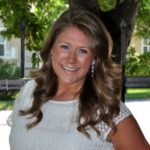 This post was written by Laura White from Warren, NJ. She just graduated from Baylor University in May with a Bachelors of Science in Biology. She remains in Waco, TX for the upcoming year to serve as an AmeriCorps member working within the Family Health Center clinics. After once year of service, she hopes to attend medical school in Texas to ultimately pursue a career in Family Medicine. She was inspired to ride the bus by her experience volunteering at the Family Health Center as a part of her Family Medicine and Community Healthcare Course at Baylor University. If you would be interested in writing a post for the Act Locally Waco blog, please email Ashleyt@actlocallywaco.org.
This post was written by Laura White from Warren, NJ. She just graduated from Baylor University in May with a Bachelors of Science in Biology. She remains in Waco, TX for the upcoming year to serve as an AmeriCorps member working within the Family Health Center clinics. After once year of service, she hopes to attend medical school in Texas to ultimately pursue a career in Family Medicine. She was inspired to ride the bus by her experience volunteering at the Family Health Center as a part of her Family Medicine and Community Healthcare Course at Baylor University. If you would be interested in writing a post for the Act Locally Waco blog, please email Ashleyt@actlocallywaco.org.
by Phil York, Act Locally Waco Housing and Homelessness Policy blogger
Since the post-holiday season, we have used the motif of unwrapping gifts to understand some of the dimensions of housing and homelessness.
We started our discussion with a definition of homelessness through Housing and Urban Development (the federal agency that administers national housing programs). We then discussed how this definition is applied to children, veterans and our other neighbors who may not have a home.
The purpose of our conversation is to keep us all informed: we need to be aware of how decisions made in Washington affect our lives in Waco.
We can use the lessons learned over the past few months and apply them to the latest update from Washington. Let us use our knowledge-base to unwrap:
- The basics of the proposed legislation
- Possible local implications of the proposed legislation
- Ways we can continue our collective efforts to build a stronger Waco
The Basics of the Proposed Legislation:
The U.S. House of Representatives Fiscal Year 2015 Transportation, Housing and Urban Development (THUD) bill is scheduled for House Appropriations Mark-up next week.
Here are the basics about the bill (a paraphrased summary provided by CSH – A Housing Policy and Advocacy Group (www.csh.org )):
- Overall, the House version of the FY2015 THUD Appropriations bill would decrease funding for HUD by $769 million from the FY2014 levels.
- The bill flat funds the Homelessness Assistance Grant programs, providing $2.1 billion. It did not accept the $300 million increase proposed by President Obama.
- There is a slight increase in Housing Choice Voucher program; however, the funding provided does not restore the 40,000 vouchers that were lost to sequestration.
- Funding for the HOME program cut by $300 million.
The U.S. House of Representatives Committee reports specifically about the Community Planning and Development program with the following update in a May press release:
“The bill contains $6.2 billion for Community Planning and Development programs – a reduction of $383 million below the fiscal year 2014 enacted level. The Community Development Block Grant formula program is funded at $3 billion – effectively equal to last year’s level – while the HOME Investment Partnerships Program is funded at $700 million, a reduction of $300 million below the fiscal year 2014 enacted level.
Subcommittee Chairman Tom Latham provided the following commentary about the proposed bill:
“My priorities in this process were to act in a bipartisan fashion to fund our most vital programs with our critical need to reduce the deficit. This is a sound, commonsense bill that meets our highest transportation and housing priorities in a fiscally responsible way. I look forward to working with my colleagues on both sides of the aisle to move this important legislation forward in an open legislative process.”
Possible Local Implications of the Proposed Legislation:
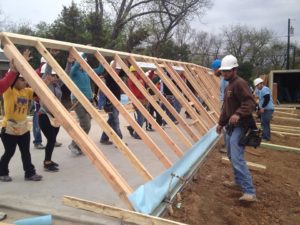 Waco Habitat is just one of many organizations that partner with the City of Waco to build a stronger Waco with the programs described above. Here are a few ways Waco Habitat used these precious public dollars to improve our community:
Waco Habitat is just one of many organizations that partner with the City of Waco to build a stronger Waco with the programs described above. Here are a few ways Waco Habitat used these precious public dollars to improve our community:
ReStore:
- By using Community Development Block Grant (CDBG) funds through a zero percent loan (that was paid back within three years), the Waco economy has been greatly impacted for the good.
- ReStore offers affordable building materials to people in our community, recycles products thus diverting them from the landfill, and supports administrative efforts of our organization.
- ReStore diverts 3,000 tons from the landfill annually and saves the city about $164,000. The net income from ReStore assures donors to Waco Habitat that 100% of their gift goes to build and repair homes in our community.
New Home Construction Program:
- We are concerned that funding levels proposed in the FY 2015 House THUD bill will make it more difficult for us to serve people living at 30% to 60% area median family income.
- Without HOME funds our partnership housing ministry would be greatly thwarted. Since 1999, Waco Habitat for Humanity has served as a Community Housing Development Organization.
- With over $3.1 million, we have built 48 houses.
- Home ownership assures about seven new home owners join the tax paying roles each year.
- Home ownership adds to the tax base of our community, improves schools, enhances professional opportunities, strengthens school performance, expands likelihood of graduation, and spreads hope for future generations.
Habitat achieved the above accomplishments thanks to our public fund partnerships. Budget cuts today affect Waco’s ability to realize a community where everyone has a decent place to live.
Ways We Can Continue Our Collective Efforts to Build a Stronger Waco:
- Remain informed: The most important call to action is for us to remain informed about the current policy landscape. Regardless of your political background or interest, we share common ground in the preservation and long term health of Waco. Follow the work of the US Committee on Appropriations: http://appropriations.house.gov/news/.
- Have your voice heard: Contact your U.S. House representative. Please provide your Representative with the talking points provided above. If your Representative is Mr. Bill Flores, you have the convenience to contact Rep Bill Flores directly via email (https://billflores.house.gov/contact/ ).
- Connect directly to the mission: There are volunteer opportunities at Habitat and other nonprofit organizations that work directly with our neighbors in need. These organizations offer opportunities for you to give of your time and talent.
Your donations, whether they be of time or money, are important – they bind us together. Once connected, we may share the urgency of the above implications and collectively move our leadership to join us as we build a stronger Waco together.
 Phil York, Director of Development at Waco Habitat for Humanity, is a self-described “policy nerd;” he is also the Act Locally Waco housing and homelessness policy blogger. You can direct questions to Phil to pyork.law@gmail.com. Would you be interested in blogging for Act Locally Waco? If so please email ashleyt@actlocallywaco.org.
Phil York, Director of Development at Waco Habitat for Humanity, is a self-described “policy nerd;” he is also the Act Locally Waco housing and homelessness policy blogger. You can direct questions to Phil to pyork.law@gmail.com. Would you be interested in blogging for Act Locally Waco? If so please email ashleyt@actlocallywaco.org.
by Sgt. W. Patrick Swanton, Waco Police Department
As we enter Police Memorial Week here in Central Texas, our hearts are heavily burdened with sadness at yet another loss for our brothers and sisters in Killeen. We can only imagine the sadness our friends are experiencing and send them our deepest and most sincere thoughts and prayers.
The unfortunate reality is that far too many officers are losing their lives in the line of duty. So far in 2014, communities in just the United States alone have lost forty-one Police Officers due to various events. We know that every day we go to work may be our final roll call. But I often wonder…do people realize what it is we are dying for? Have you ever really stopped and thought …why did that officer die?
Let me try to explain what it is that causes us to put ourselves in harm’s way. What it is that makes us run to the sound of gunfire when common sense tells you to run away; what it is that causes us to go down a darkened hallway looking for the deranged individual that just killed his family, or even something that is as simple as stopping a car for a traffic violation at 2:00 in the morning…on a lonely road…not knowing the man in the car had just picked up his monthly supply of meth and knows if he gets arrested he is a three-time loser and goes back to prison forever.
It’s you…our community, our friends and our neighbors. It’s YOU!!! Whether you like us or not, if we know you or not, or even if we have arrested you before; it makes no difference to us as we are tasked with keeping all safe. It is you that we stand watch for every day we wear the badge. It really is just that simple.
We don’t do it for the money, the glory or the occasional free cup of coffee and we certainly don’t do it to be called heroes or to make the local headlines; we simply do it because we believe in right and wrong. We believe that without someone to stand up to the bullies, punks, thugs, and killers in our world, there would be chaos.
No…we are not perfect, not always charming and sometimes not even friendly…but we are always there. We really are just a phone call away and ready to come running in the blink of an eye. I still say this after thirty-four years of policing…Law Enforcement is a noble profession and one I’m proud to be a part of.
We lose sometimes and that’s the most terrible part of this job. That is the one thing that makes this job almost unbearable. For some living in the aftermath, it will be the final straw. Knowing that some heartless, cowardly dirtbag was able to take one of us down leaves us with an incredible feeling of loss that unless you wear the badge or love one of us that does, is difficult to comprehend.
The feeling we get when an “Officer Down” call is dispatched is indescribable and haunts our nightmares continuously. But what is important to know is that we learn. We learn how to get better, we learn how to adjust and we learn how to heal…heal but not forget. And though it is hard to see at times…not one of us goes in vain as we all believe there is a lesson in everything. It’s unbelievable how those blue guardian angels whisper in our ear day in and day out…that doesn’t look right, or that car is out of place, or stay back and watch this guy a few minutes. More often than not they are absolutely right and we live to see another day.
It is paramount that we share our tears with our brothers and sisters in blue but more important than that is the fact that we will rise. We will be back at work tomorrow protecting those that expect it of us and even those that don’t invite it…we will keep watch over our responsibilities and do our best to keep the wolves at bay. And know this…we will never forget those that gave the ultimate sacrifice by giving their lives in the line of duty as we recognize this…John 15:13 Greater love hath no man than this, that a man lay down his life for his friends.
It is a sad time for our friends in Killeen and around the country for those communities that have lost officers in the line of duty. We mourn with you and pray for your healing. We stand together as the first line of defense for our communities and do so proudly.
To our citizens…it truly is you that we serve. Sometimes with the ultimate sacrifice.
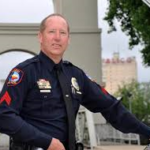 This week’s Blog was written by Sgt. W. Patrick Swanton, Spokesman for Waco Police Department. (Facebook: WacoPoliceDepartment; Twitter: WacoPolice)
This week’s Blog was written by Sgt. W. Patrick Swanton, Spokesman for Waco Police Department. (Facebook: WacoPoliceDepartment; Twitter: WacoPolice)
If you are interested in writing for the Act Locally Waco blog, please email AshleyT@actlocallywaco.org
.
Sgt. W. Patrick Swanton
Waco Police Department
by Ashley Bean Thornton and others…
The Greater Waco Community only has a certain amount of money allocated for transportation related expenses. Our city planners are asking to hear from us about how we would like to see it spent. They have invited us to give our input at a series of public information meetings. In a blog post last week, I shared some of my thoughts about transportation and specifically tried to make the case for having more emphasis on public transportation as a part of the overall transportation plan for our region.
Here are some other voices sharing their reasons for wanting a more robust system of public transportation in the Waco area:
(In a letter to the Editor of the Waco Trib)
I read with interest Ashley Thornton’s editorial (May 7) on transportation priorities in Waco, finding it compelling and informed.
As a person who works for an agency that helps older adults, I can affirm with Ashley that we have a public transportation system that is not adequate. Up until 2005, Meals & Wheels had a very busy transportation service which focused on the transit needs of older adults in Waco. However, due to funding shifts our transit program for older adults in the city basically dissolved. We were transporting 249 older adults taking 700 trips per month to clinics, hospitals, doctors’ offices, dentist offices, social service agencies, and dialysis centers.
At that time, it was decided by funding sources that the older adults of Waco could utilize the public transportation system or they could qualify for the ADA (physically challenged) vans. Echoing what Ashley reported, this would require older adults who did not qualify for ADA services, to walk to a bus stop, or flag down a bus, ride it to the hub downtown and then change buses to get where they needed to go.
Think about Waco – in a city that doesn’t have many sidewalks, this required people who were using canes or walkers, or who have mobility issues to walk on uneven surfaces or in the streets. Also, very few of the bus stops in Waco are covered, which means the older adults are at stops that have no protection from the weather. Would you want your mother waiting at a bus stop for an hour in 100 degree heat?
Navigating the bus system is also confusing for many of our older adults. We do not have signage that gives the bus routes. To Waco Transit’s credit, they did send out staff to train our former clients, who requested help, on how to use the bus system. However, I imagine these requests were few in number.
So what did they do without the curb-to-curb service? Many fell back on family and friends to take them where they needed to go. Others, some of whom shouldn’t be driving due to vision issues, drive their own cars. Some of our clients were quite capable of riding the Waco bus and have transitioned to that system. However, we still get calls every week from folks wanted to know if we’re giving rides again; or we receive a call from an adult child saying that their parent needs transit help because they shouldn’t be driving anymore.
I ask that the community lift its voice to say we need a variety of public transit options in Waco and share this need with the Metropolitan Planning District who is/was conducting the meetings on transit needs in Waco. We all have to work together to make Waco a community in which one can age well.
Sincerely, Libby S. Bellinger, Associate Director, Meals & Wheels
(In a response on Facebook to my blog post)
Having a decent, accessible, and reliable public transportation system is so important for any city. Having lived in NYC most of my life, it is something I always took for granted until I moved to Waco. I have many friends who don’t drive; they are lifelong New Yorkers, they have never had cause to learn. There are many reasons we should invest in better public transportation: reducing our city’s carbon footprint, being a more welcoming and accessible city for people with disabilities, attracting employees from large cities where public transportation is the norm, and providing a means of transportation to our neighbors who simply cannot afford a vehicle. There are multiple health reasons why a person may not drive. I have a friend whose sister had no choice but to move to a larger city with public transportation. Her sister has epilepsy, therefore she cannot drive. This person would have been a huge asset to our community. She has multiple graduate degrees, is a community builder, philanthropic, and just a very cool person. One of the interim ministers at a local congregation a few years ago was blind. She simply could not live here. She obviously worked on Sunday, yet was completely dependent on others for a ride, as busses don’t run on Sunday. Most people take health for granted, just as many Wacoans take having a car for granted. What would you do if due to an accident or illnesses you could not drive? Could you get to work? Would you be able to get to the market, medical appointments, place of worship, a friend’s house, anywhere?
— Carmen Saenz
(Another response on Facebook to my blog post)
And now the voice of a really senior citizen. We need affordable ways for seniors to get where they need to go such as to doctors, labs, therapy, grocery are necessary. It would be nice to have some entertainment venues accessible also. It would be nice to have access to library services. Perhaps we don’t contribute to the community from the point of view of many but if we had transportation we maybe could contribute. And, we’d grow older more slowly because of the mental stimulation interaction would provide. And, there is conceivably an undocumented safety issue here. Many seniors continue to drive after it is unsafe because they do not have an alternative.
— Joycie Gifford
If you agree that Waco needs more Public Transportation, please make your voice heard! There are two public input sessions remaining where you can speak directly with the representatives from the Metropolitan Planning Organization (MPO). They are : Monday, May 12, 2014 – 6 p.m. at South Waco Community Center, 2815 Speight and Thursday, May 15, 2014 – 12 Noon at Dr. Mae Jackson Development Center, City of Waco, 401 Franklin Ave.
If you cannot attend either of those meetings, you can submit your written comments directly to the MPO, as long as they are received no later than June 15. Suggestions may be submitted by fax at (254) 750-1605, by e-mail to mpo@ci.waco.tx.us or by mail directed to Christopher Evilia at the following address: Waco Metropolitan Planning Organization, P.O. Box 2570, Waco, Texas 76702-2570.
Also, please consider writing a letter to the Waco Trib to help build up the community engagement around the issue.
Transportation planning is complicated and will involve trade-offs. There is simply not enough money to do everything that everyone would like to do in regard to transportation. Our city planners are asking for our input. If we do not give it to them, how can we expect them to prioritize the things that are important to us?
For more information about the Transportation Plan or the community input process, please visit the website: www.waco-texas.com/cms-mpo .
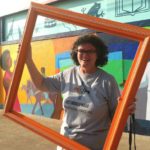 This Act Locally Waco blog post is by Ashley Bean Thornton, the Manager of the www.www.actlocallywaco.org website and the editor of the Friday Update newsletter. The Act Locally Waco blog publishes posts with a connection to these aspirations for Waco. If you are interested in writing for the Act Locally Waco Blog, please email ashleyt@actlocallywaco.org for more information.
This Act Locally Waco blog post is by Ashley Bean Thornton, the Manager of the www.www.actlocallywaco.org website and the editor of the Friday Update newsletter. The Act Locally Waco blog publishes posts with a connection to these aspirations for Waco. If you are interested in writing for the Act Locally Waco Blog, please email ashleyt@actlocallywaco.org for more information.
My first car was a yellow AMC Pacer complete with an in-dash 8-track player. It was very round and had huge windows. It was like driving around in a big glass egg. Sounds cool right? Coolness (or lack thereof) aside, from the moment I first turned the key in the ignition of that yellow Pacer until this very moment I have never seriously worried about transportation. A few flat tires and other mal-functions notwithstanding, I have always had an operable vehicle and the means to drive it just about anywhere I wanted to go. And, oblivious well-off person that I am, I have always taken that luxury more or less for granted.
According to the Census Bureau’s 2008-2012 American Community Survey 5-year estimates, there are over four thousand households in Waco with no vehicle available. Those of us who have always had cars may have to let the implications of that sink in for a bit before we can even imagine what life without a vehicle would mean on a day to day basis. I have always taken for granted, for example, that I could get to work at any hour that my employer required. If I forgot something I needed, I have always been able to run home at lunch and get it. I have always taken for granted that I could get the milk and ice cream home before it was spoiled. I have never had to think about how heavy my groceries were and whether or not I would be able to carry them all the way home. I have rarely thought twice about being able to drive to the doctor in air-conditioned comfort if I was feeling bad. For households with no vehicles, these “simple” day to day activities require planning and negotiation, and of course the planning and negotiation is made many, many times more complicated if there are kids in the picture.
Our city is designed around the notion that our residents have dependable transportation. For example, many of our children now attend schools in neighborhoods other than their own. Our grocery stores and drug stores are not located in our residential areas. Perhaps even more important, neither are our workplaces. According to a recent report by the Upjohn Institute to Waco City Council, only 4.6% of the people in Waco work in the same census tract where they live. Transportation is not just a matter of convenience. It has consequences for health, education and certainly for employment.
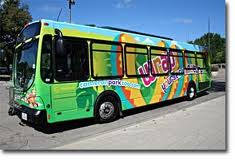 For people who do not have access to a private vehicle, public transit is a lifeline. In Waco that lifeline is pretty thin. First of all, in Waco the bus only comes around once an hour. It only operates during limited hours: Monday through Friday from 5:00 AM to 7:00 PM; Saturday from 6:00 AM – 8:00 PM; no service on Sundays. Also, our bus system is a “hub and spoke” system with all routes radiating from the Transit Center on Eighth street downtown. That means if you need to change buses to travel across town, it could end up taking you more than an hour to get to where you are going.
For people who do not have access to a private vehicle, public transit is a lifeline. In Waco that lifeline is pretty thin. First of all, in Waco the bus only comes around once an hour. It only operates during limited hours: Monday through Friday from 5:00 AM to 7:00 PM; Saturday from 6:00 AM – 8:00 PM; no service on Sundays. Also, our bus system is a “hub and spoke” system with all routes radiating from the Transit Center on Eighth street downtown. That means if you need to change buses to travel across town, it could end up taking you more than an hour to get to where you are going.
All of this has implications for employment. If you depend on public transportation, you can’t, for example, have a job that requires you to work on Sundays. If you miss your bus you could be an hour or more late to work. In recent years, we have added the evening LINK, a limited “reservation only” service that people can use to go to work or school between 8:30 and 11: 45 PM. That service has helped some for people who want to be able to work shifts that end after 7:00 PM, but additional service with shorter wait times would make the bus a much more viable option for getting back and forth to work.
I attended a meeting the other day hosted by Waco Transit in which the speaker discussed some of these realities. At the end of the presentation one of the questions he asked was: “Do you believe there is community and political support to increase public transit in the Waco community?” I hope so, for many reasons. Even though I may never personally have to depend on a city bus, I would like to be able to use it sometimes. Also, I am better off if my community is better off, and I believe my community is better off with stronger public transportation. Our community is better off if people who cannot yet afford a car have a dependable way to get back and forth to work in a reasonable amount of time. Our community is better off if families of modest means can get by with one vehicle instead of having to spend precious resources on a second car. Also, as Waco grows in population (and it will), a good public transit system will help us keep the traffic and congestion to a level that we can all tolerate. (Beware the traffic of Austin, my friends!) Selfishly, as I get older, I imagine there will come a time when I can no longer drive my own car. I believe our community is better off if our seniors have a bus system they can depend on to maintain some level of independence.
The Greater Waco Community only has a certain amount of money allocated for transportation related expenses. Our city planners are asking to hear from us about how we would like to see it spent. They have invited us to give our input at a series of public information meetings to be held at different locations around town during the next few weeks, see the details below. I hope you will attend and let them know that you would like to see some of that money invested in a more robust public transit system.
Here’s the invitation: The MPO staff would like to invite all interested persons to attend any of the following meetings regarding development of the new 2040 Metropolitan Transportation Plan. Monday, May 5, 2014 – 6 p.m. at Hewitt Community Center, 208 Chama Drive. Thursday, May 8, 2014 – 6 p.m. at Lacy Lakeview Civic Center, 505 Craven. Monday, May 12, 2014 – 6 p.m. at South Waco Community Center, 2815 Speight. Thursday, May 15, 2014 – 12 Noon at Dr. Mae Jackson Development Center, City of Waco, 401 Franklin Ave. For more information please visit the website: www.waco-texas.com/cms-mpo .
 This Act Locally Waco blog post is by Ashley Bean Thornton, the Manager of the www.www.actlocallywaco.org website and the editor of the Friday Update newsletter. The Act Locally Waco blog publishes posts with a connection to these aspirations for Waco. If you are interested in writing for the Act Locally Waco Blog, please email ashleyt@actlocallywaco.org for more information.
This Act Locally Waco blog post is by Ashley Bean Thornton, the Manager of the www.www.actlocallywaco.org website and the editor of the Friday Update newsletter. The Act Locally Waco blog publishes posts with a connection to these aspirations for Waco. If you are interested in writing for the Act Locally Waco Blog, please email ashleyt@actlocallywaco.org for more information.
by Jadi Chapman, Texas Hunger Initiative
If I were greeted everywhere the same way I am greeted when I walk through the doors of Harrison Senior Center life would be a joy. As I enter the senior center every week I am greeted with warmth, love, and a lot of hugs. I sit and talk with the senior citizens as they eat their lunch provided by Meals on Wheels. Every senior wants to tell me his or her story. They want to impart the wisdom they have gained from the Great Depression, the Great Wars, and illnesses that have befallen them and their loved ones. There are countless years of experience in the room, but as a senior shared with me, very few people want to listen to the knowledge gained from those experiences.
In most cultures the elderly are revered and respected. In Asian countries it is of the utmost importance to be respectful and to celebrate the elderly. In Latin culture it is commonplace for many generations to live together under one roof. The United States, however, is very youth-centric.
I had never really thought about issues that older Americans face. They gradually lose their independence as their health begins to fail and the symptoms of getting older set in. As I have gotten to speak with seniors over the past few months I have learned to admire and respect the beauty of aging. The seniors I spoke with are all so grateful and positive for what they have and the life they have lived.
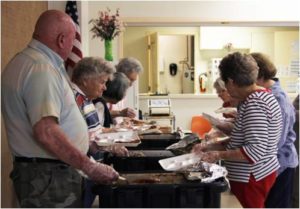 There doesn’t seem to be as much discussion or action around senior issues as there is around other social issues. It is hard to get people to rally around the aging population; people don’t see them as our future but as our past. Hunger among older Americans is something that can be forgotten when addressing food insecurity in the United States. Meals on Wheels serves 15 percent of the over half a million food insecure seniors in Texas. This leaves a substantial number of seniors wondering where their next meal will come from.
There doesn’t seem to be as much discussion or action around senior issues as there is around other social issues. It is hard to get people to rally around the aging population; people don’t see them as our future but as our past. Hunger among older Americans is something that can be forgotten when addressing food insecurity in the United States. Meals on Wheels serves 15 percent of the over half a million food insecure seniors in Texas. This leaves a substantial number of seniors wondering where their next meal will come from.
Because so many factors come into play when attempting to address senior hunger, it is an issue that is better addressed holistically. Some of these factors include:
- Financial insecurity
- Lack of transportation
- Special dietary needs
- Mental illness
Food insecurity among seniors is not simply a matter of not being able to afford to buy food. Sometimes seniors require specialized diets that are difficult to follow on a limited income. Metabolic illnesses, such as diabetes, impact what seniors are able to eat. Large supermarkets can also prove quite taxing for seniors. It takes a lot of energy to walk all over a large, crowded store when suffering from ailments such as arthritis, respiratory problems, or knee and hip replacements.
Alzheimer’s and Dementia can also have an impact on a senior’s nutrition. They may just forget to eat. Even if they have meals delivered, they may put the food in the fridge and then forget it is there. Many times the people who care for people with Alzheimer’s and dementia are seniors themselves. Sometimes these caretakers are so focused on the needs of the patient that they tend to neglect their own nutritional needs. When tackling senior hunger, it is important to approach the issue holistically. Mental, physical and emotional needs must be met in order to increase a senior person’s quality of life.
We were taught to respect our elders and look to them for wisdom, but American society tends to focus on our future instead of looking at our past to guide our future. May is Older Americans Month. Find a way to support the seniors in your community by donating your time to Meals and Wheels or Friends for Life, or by simply by helping the seniors in your community.
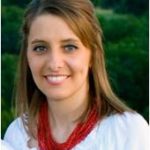 This Act Locally blog post is by Jadi Chapman. She is a Field Organizer at Texas Hunger Initiative’s Waco Regional Office. Her focus is on issues facing seniors accessing food in the Waco community. If you would be interested in writing for the Act Locally Waco blog, please contact ashleyt@actlocallywaco.org.
This Act Locally blog post is by Jadi Chapman. She is a Field Organizer at Texas Hunger Initiative’s Waco Regional Office. Her focus is on issues facing seniors accessing food in the Waco community. If you would be interested in writing for the Act Locally Waco blog, please contact ashleyt@actlocallywaco.org.
.
by Felix Landry
The earth has many laws. Some of these laws – like the law of gravity – are well known. Others are less obvious. I’ve noticed a law at work both in nature and in the structure of cities which I call “the law of scale.” There is an important relationship between the size of the creature and the size of the environment it inhabits. They should “scale up” or “scale down” together. If one grows or shrinks without the other, the health of both the creature and the habitat begin to suffer. For example, it is obviously a problem if a mother bird does not make her nest big enough. What may be less obvious is that if the nest is too big that can also cause problems. If a bird builds her nest too large, then the upkeep of the nest eventually consumes the time and energy meant for gathering food and other necessary activities.
This law applies to people as well, but we are not as good at obeying it as the birds seem to be…particularly when it comes to transportation.
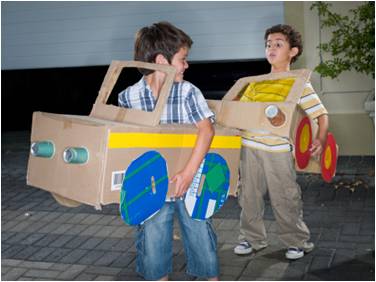 Imagine you work in a busy office building. There are lots of people in the halls all day, but everything generally flows smoothly. Then imagine that for some reason your employer implements the bizarre policy of requiring everyone to wear a refrigerator box whenever you travel the corridors. What would happen? Immediate, aggravating, stressful congestion in the halls. Why? Because your boss has broken the law of scale. You, the creature, got bigger, but the environment did not get bigger. The halls in your office building are built to human scale, not to refrigerator scale. If your boss were determined to continue this refrigerator box policy, the congestion would eventually drive you to take the expensive step of remodeling the building with much wider and longer corridors.
Imagine you work in a busy office building. There are lots of people in the halls all day, but everything generally flows smoothly. Then imagine that for some reason your employer implements the bizarre policy of requiring everyone to wear a refrigerator box whenever you travel the corridors. What would happen? Immediate, aggravating, stressful congestion in the halls. Why? Because your boss has broken the law of scale. You, the creature, got bigger, but the environment did not get bigger. The halls in your office building are built to human scale, not to refrigerator scale. If your boss were determined to continue this refrigerator box policy, the congestion would eventually drive you to take the expensive step of remodeling the building with much wider and longer corridors.
This is very similar to what we do with our current transportation system. When we step out of our homes or offices and into our vehicles, we suddenly explode in size like the incredible hulk. We, the creatures, have scaled up in size, but our environment, the roads, have not scaled up with us. We end up with maddening congestion such as we see along China Spring Hwy or anywhere in the City of Austin. We have broken the law of scale in regard to our city streets, and we will continue to have congestion until we restore the correct proportions.
For 50+ years of vehicle centric development we have tried to deal with this problem by scaling up the environment. We have “hulked out,” we reason, so our roads need to “hulk out” to keep up with us. We have basically fallen into the following pattern:
- More (and bigger) vehicles are on the road,
- Which leads to congested roads,
- Which leads to building wider and longer roads,
- Which in turn increases the distances between destinations,
- Which of course increases our dependence of vehicles,
- Which puts more vehicles than ever on the road.
The above cycle has two major problems in my opinion.
Problem 1: Between steps 2 and 3 whichever government agency wants to build the road must first gather the taxes to pay for the project. We are running out of tax money for road construction and maintenance, and not many people want to raise taxes.
Problem 2: Step 4 boils down to sprawl, which over the long haul decreases the average value of land serviced by the road system, while simultaneously increasing the amount of roads needed. The need for tax revenue increases while the capacity to generate it decreases.
In other words, our current approach to development is leading us to be like the bird who has made her nest too big. We are getting to the point that we must waste valuable resources just to maintain the nest.
Fortunately, there’s another way to approach the problem. We could figure out ways to not “hulk out” between our front doors and our destinations.
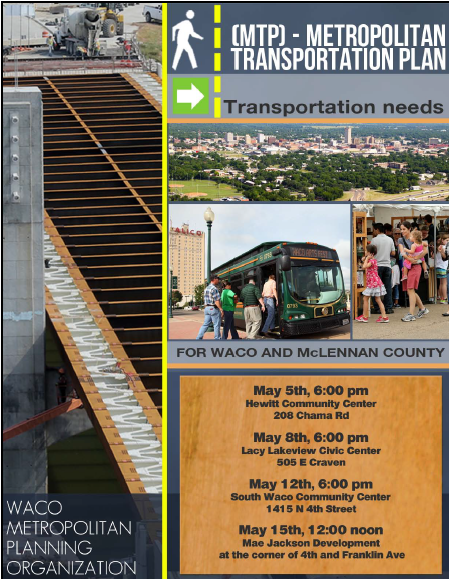 Let’s return to our crazy refrigerator boxes (vehicles) in the corridors (roads) at the office (city) analogy. The refrigerator boxes make each person take up too much space. The root of the corridor congestion is that the halls were not built for such a high space to person ratio.
Let’s return to our crazy refrigerator boxes (vehicles) in the corridors (roads) at the office (city) analogy. The refrigerator boxes make each person take up too much space. The root of the corridor congestion is that the halls were not built for such a high space to person ratio.
Here are some suggestions on how to lower the space to person ratio and ease congestion:
- Don’t take your box on every trip.
- Use smaller boxes.
- Fit more people in fewer boxes. If two or more people are headed to the same destination, they could all take the same box instead of each taking their own.
- Create a system of large high capacity community boxes that travel the main corridors of the office at regular intervals. Anyone could hop into a community box as it passes by decreasing the overall ratio of box area to person area.
Obviously these suggestions have real world counterparts:
- Walk
- Ride a bike
- Car pool
- Public transit
I am not trying to build a “cars are evil” bonfire. We don’t need to get rid of vehicles. But we could choose to scale ourselves down rather than choosing to scale up our road system. We could lower the amount of space people take up traveling on our roads. We could reduce the high vehicle to person ratio that is currently clogging our public right of ways. This “scaling down” could be much less expensive and more sustainable financially in the long run. The great news is that Waco, from what I’ve seen, has a large number of people who would love to lower their own vehicle to person ratio. Yes, we would have to make some initial investments to build the infrastructure to accommodate them. But, with enough support, Waco has great potential to facilitate a much lower vehicle to person ratio which will be a much more sustainable way to satisfy the “law of scale” in the long run.
 Felix Landry is the senior planner and bicycle and pedestrian coordinator for the City of Waco. He and his wife moved here in 2010 from College Station, Texas. They have two young boys.
Felix Landry is the senior planner and bicycle and pedestrian coordinator for the City of Waco. He and his wife moved here in 2010 from College Station, Texas. They have two young boys.
Are you Interested in getting in on the conversation about transportation in Waco? Plan to attend an upcoming Metropolitan Transportation Plan Community input meeting. Meetings are scheduled for May 5, May 8, May 12 and May 15. For more details please visit the website: http://www.waco-texas.com/cms-mpo/ or the Act Locally Waco May Event Calendar.
by Alan D. Northcutt, Waco Friends of Peace
Like most Wacoans, I used to purchase bottled water periodically. But then I learned the truth about this product:
- In the U.S. tap water is safe and is subject to more stringent federal regulations and inspections than bottled water.
- About half of bottled water brands are simply municipal tap water, but cost up to 1000 times the price of tap water.
- At a time when droughts are widespread, 3 liters of water are required to produce 1 liter of bottled water.
- The production and transportation of one bottle of water requires energy equivalent to the oil of a one quarter filled bottle. This process added 2.5 million tons of CO2 to the atmosphere in 2006.
- 75% of water bottle plastic ends up in landfills, lakes, streams and oceans, and requires centuries to decompose.
- The planet’s oceans are contaminated by five gigantic circulating patches of plastics and microplastics, the largest covering 500,000 square miles.
- Because animals mistake plastic for food, annually an estimated 1 million seabirds and 100,000 marine mammals die from plastic, and 2/3 of our fish stocks ingest plastic.
Since I became aware of these facts I have never purchased bottled water. We can all easily take steps to conserve precious natural resources while protecting the biosphere and its inhabitants by drinking water in reusable metal or reusable BPA-free plastic containers. I believe bottled water should be reserved for natural disasters and other emergency situations only.
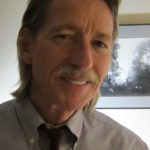 This week’s blog is by Alan D. Northcutt. Alan has lived in Waco for 28 years. He is a physician specializing in skin pathology. He has been active in the anti-war movement since college days, and heads the Waco Friends of Peace. Alan believes the most important issue facing mankind is climate change, which has become the primary focus of Friends of Peace. If you would be interested in writing for the Act Locally Waco blog, please contact Ashley Thornton by email at ashleyt@actlocallywaco.org.
This week’s blog is by Alan D. Northcutt. Alan has lived in Waco for 28 years. He is a physician specializing in skin pathology. He has been active in the anti-war movement since college days, and heads the Waco Friends of Peace. Alan believes the most important issue facing mankind is climate change, which has become the primary focus of Friends of Peace. If you would be interested in writing for the Act Locally Waco blog, please contact Ashley Thornton by email at ashleyt@actlocallywaco.org.
By Kelsey Scherer, Child Hunger Outreach Specialist
Since we know that Waco children and families struggle with hunger throughout the school year, we also know that hunger – like any other complex issue inextricably linked to poverty – doesn’t take a summer vacation. That’s why programs like the Summer Food Service Program, which we know locally as free Summer Meals for Kids, are critically important in our community. Waco ISD’s Child Nutrition Services has served free Summer Meals for over twenty years in partnership with school campuses, local churches, and nonprofit organizations, but this year, they’re doing things a little bit differently.
For the first time ever, Waco ISD’s Child Nutrition Services will be launching a new mobile meal program called “Meals on the Bus!” The program will address the longstanding barrier of inadequate access to transportation that has, for many years, been cited as a top reason that children are unable to visit summer meals sites and receive a nutritious meal. By bringing the meals directly to groups of kids at select locations, parents and advocates won’t have to worry about children crossing busy streets or traveling far from home in order to have access to a free lunch.
Two Waco ISD buses have been retrofitted with the collaboration of Waco ISD and STS, and will be fully equipped to serve hot meals to up to 40 children at a time. Children will line up and receive their meals inside the bus, where they will be able to sit in the bus seats and enjoy their meal safely and in the comfort of an air-conditioned space. Targeted stops will include apartment complexes and areas with high densities of children who could benefit from the meal. The site list will be announced soon, but several great partners, including the Waco Public Library System, are on board. Like any traditional Summer Meals site, this program provides limitless potential for partnership with churches, community organizations, state agencies, and others, who have the desire and flexibility to provide summer programming and enrichment to children on-site. Waco ISD will also operate many traditional, non-mobile sites throughout the summer, as always.
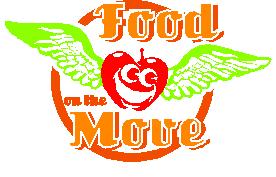 This summer, you will also see Waco’s newest child nutrition program sponsor, CitySquare, launching their mobile Food on the Move program in Waco and beyond! The fact that this summer, Waco will be graced with the presence of not one, but two, food sponsors trying out new meal service models speaks to the willingness of groups to collaborate and coordinate services on behalf of Waco children and families. It also reflects the strength of growing efforts to innovate and come up with creative, strategic solutions to challenges within this space. CitySquare has done an excellent job of coordinating dinner meal service to over 900 children daily at participating afterschool programs in Waco since January 2014.
This summer, you will also see Waco’s newest child nutrition program sponsor, CitySquare, launching their mobile Food on the Move program in Waco and beyond! The fact that this summer, Waco will be graced with the presence of not one, but two, food sponsors trying out new meal service models speaks to the willingness of groups to collaborate and coordinate services on behalf of Waco children and families. It also reflects the strength of growing efforts to innovate and come up with creative, strategic solutions to challenges within this space. CitySquare has done an excellent job of coordinating dinner meal service to over 900 children daily at participating afterschool programs in Waco since January 2014.
Both of these programs have been in the planning stages for several years, but additional energy, fresh resolve, and technical assistance were brought to the table when the CHAMPS grant, sponsored by National League of Cities (NLC) and Food Research and Action Center (FRAC) and funded by the Walmart Foundation, was awarded to the City of Waco’s Parks and Recreation Department. The specific goal of this grant is to increase the number of children who participate in the federally-funded Summer and Afterschool Meals programs, and we have already seen those numbers increase through afterschool meals as a result of the work of this team (of which I am, of course, a totally unbiased member). I am thrilled that our city is being proactive in launching a new model for meal service that has potential to positively impact the wellbeing of children, teens, and families. I am encouraged that we have already seen similar programs be enormously effective in other Texas communities, and I look forward to helping these leaders try out this model in our own community, tailoring it to the specific needs and desires of our neighbors. I can’t wait to see all that will come of these unique partnerships, and see new partnerships and collaborations formed around these great programs.
Keep your eyes peeled for Waco ISD’s “Meals on the Bus!” and CitySquare’s “Food on the Move” serving free Summer Meals to kids and teens ages 18 and under in early June, and an advertising campaign beginning soon. If you want to get involved by supporting a Waco ISD or CitySquare site through volunteers and activities for kids, or helping spread the word, please contact Kelsey Scherer at kelsey_scherer@baylor.edu or 254-300-7801.
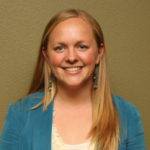 Kelsey Scherer blogs for Act Locally Waco about Food Security and related issues. She is a Child Hunger Outreach Specialist at Texas Hunger Initiative’s Waco Regional Office. Kelsey is also a team member for the CHAMPS grant. The CHAMPS project aims to equip city leaders, anti-hunger groups, and the broader community to more effectively combat child hunger with the help of summer and afterschool meal programs.
Kelsey Scherer blogs for Act Locally Waco about Food Security and related issues. She is a Child Hunger Outreach Specialist at Texas Hunger Initiative’s Waco Regional Office. Kelsey is also a team member for the CHAMPS grant. The CHAMPS project aims to equip city leaders, anti-hunger groups, and the broader community to more effectively combat child hunger with the help of summer and afterschool meal programs.
